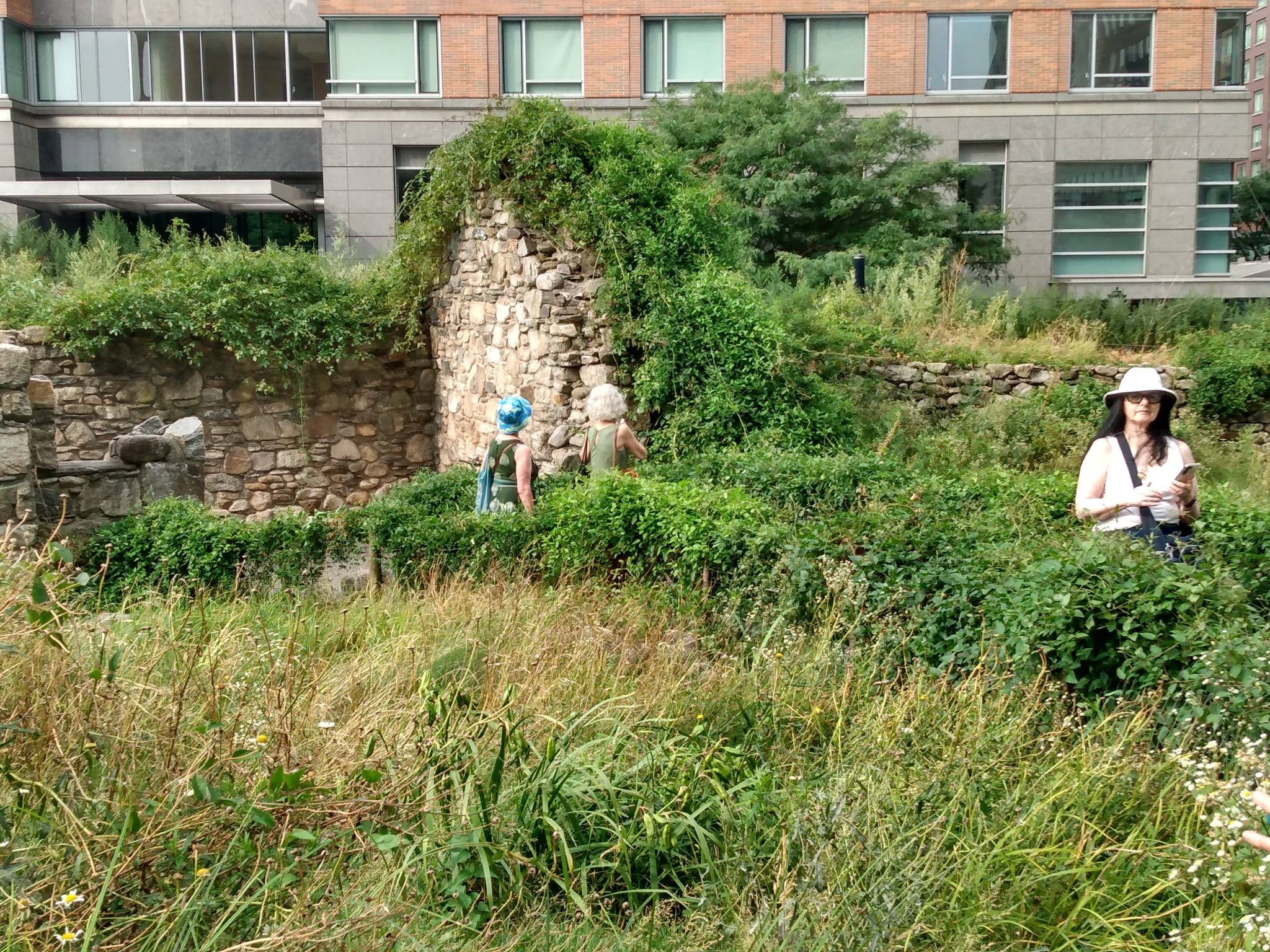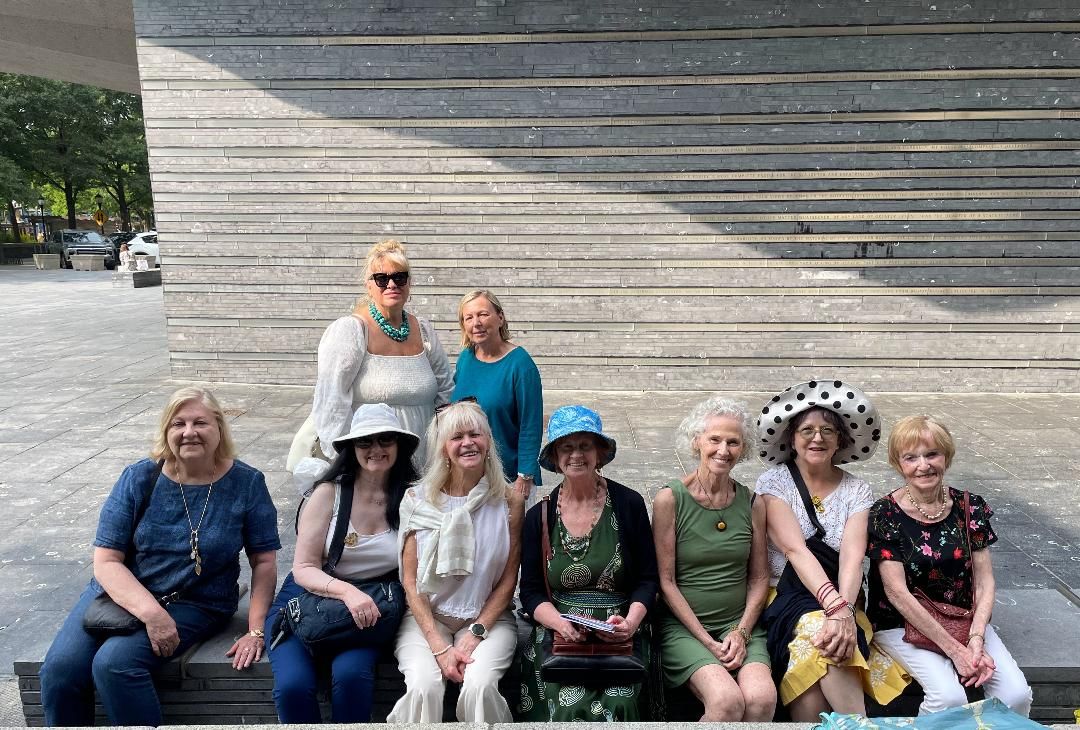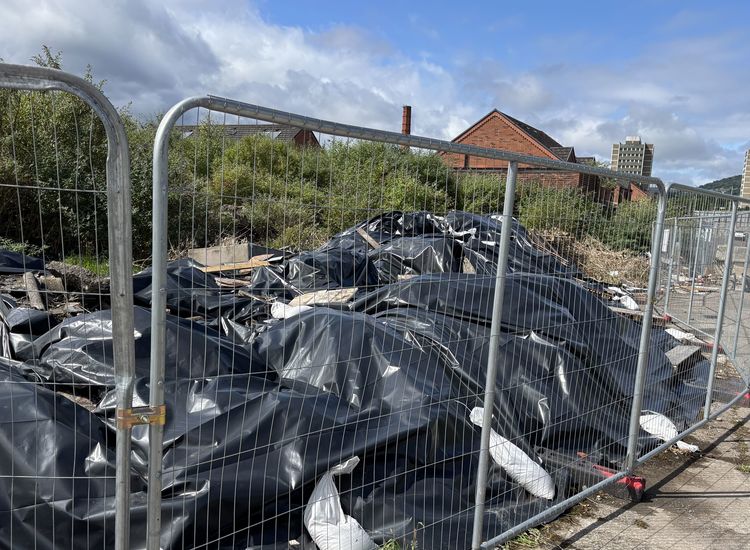On the last Sunday in July when thousands were climbing Croagh Patrick in my native County Mayo, the women of Nollaig na mBan NY and friends celebrated the Celtic fire festival of Lughnasa. Dedicated to bread, bounty and growth, Lughnasa traditionally marks the beginning of the harvest season. Croagh Patrick, (Patrick’s Stack) is known locally as “The Reek.” We think that the Sun god Lugh drew people upwards to pay attention to light and be guided by it. It is said that inhabitants climbed and worshipped on Croagh Patrick as far back as 3000 BC at Lughnasa, the start of the harvest season.
Nollaig na mBan NY was joined by our friends from the Ukrainian National Women’s League of America for a Lughnasa lunch. After exchanging summer stories about dealing with this summer’s extreme heat, our trips abroad and cultural breaks like the Catskills Irish Arts Week, we made our way to the Great Hunger Memorial just steps away from our lunch venue.
Dolores Nolan mindfully organized our event to include this walk to connect with tradition on that day.

Delores Nolan at the Great Hunger Memorial.
We know that walking and especially climbing is good for the body as well as the soul. During our walk we continued to share our summer stories. I told the group about my successful Reek climb on a sunny Sunday in the ‘Nineties. I was inspired to see people of all ages getting themselves to the summit and back. Many find the descent of Croagh Patrick more challenging than the upward climb. Fortunately, I carried a stout stick that day to help with balance on the way down. My second attempt in 2018, was less successful. On the ascent, I met a rescue team carrying a climber down on a stretcher. Noting that the pilgrim was about my own age and realizing I was less than half way up the 2,507ft mountain, I decided to turn around and go back down. I waited in the cafe for a couple of hours for my younger friends to finish the climb. You might say I paid attention to the light in that situation and forgave myself for the tea and cake in the Murrisk Community cafe at the foot of the mountain. I knew that decision to treat myself was in fierce contrast to some of the brave climbers on bare feet.
The day of our walk in Battery Park this year, the Sun god Lugh was extremely strong and we were glad we wore sun hats. We knew that the Memorial featured a display of 32 marked stones representing all the counties of Ireland. Dee, Siobhán and others in the group got their phones ready to take photos of the stone brought over from their ancestral counties. We reminded ourselves that the Memorial we were entering was dedicated to shed light on the Great Irish Hunger – An Gorta Mór when more than one million in Ireland starved to death between 1845 and 1852.
Most of us had visited the site since it opened in 2002.
This time, we were saddened to see that the structure so beautifully designed by the internationally renowned sculptor Brian Tolle is currently in a state of neglect. The natural rugged appearance of thickly planted native Irish flora-plants, the likes of which grew in the fields of my childhood, now appear to be overgrown and trampled there. Many of the county stones were covered with long grasses and weeds. Trash was visible around the parameter and most offensive were the people walking dogs along the paths of the structure. To us, the Memorial should be a place of quiet reflection and solemnity.
Following our visit, I contacted a few Irish community leaders to ask if anyone could shed light on the reason for its current state.
“It was once a beautiful monument,” commented Paul Keating, who organizes the Catskills Irish Arts Week. He added too that it was the best he had seen anywhere “poignantly in sight of Ellis Island, the Statue of Liberty and even Ground Zero where the Irish immigrant experience was deeply felt.”
Paul remembered that 10 years after it was built, it started to develop foundation problems and leakage. I was reminded that the late Adrian Flannelly played a large part in the creation of the Monument, which features an Irish famine cottage from Attymas, Co. Mayo, as a primary centerpiece.
People in our Lughnasa group expressed sadness as we were leaving the Memorial and we wondered aloud why it was in such a state of neglect, especially with the surrounding neighborhood now, lively and thriving.
Maybe Lugh will shed light on how we can help bring it back to its former beauty.
Maura Mulligan is author of the memoir “Call of the Lark.”









